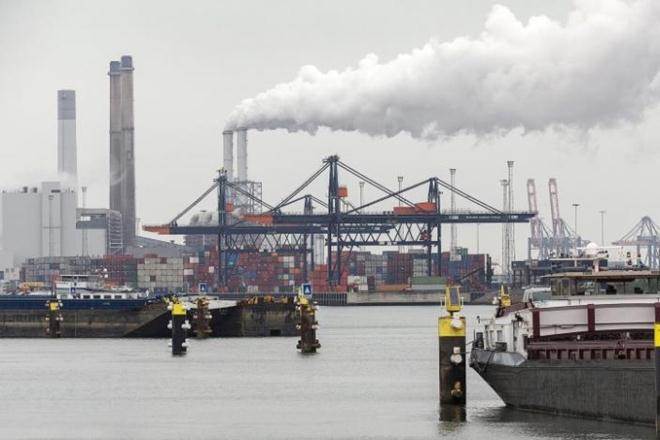We met Pipavav management to discuss business operations. We find management’s cost control and high payout ratio commendable. However, the port has posted negative volume growth vs Mundra’s +6% in FY16-18. Our downgrade is a year late as our expectation that the parent’s management change would drive India volumes did not materialise. Our sharp EPS cut reflects lower Ebitda. We see limited upside to our PT of Rs 105 (vs Rs 175) and downgrade to Hold from Buy.
Average realisation/tonne on declining trend and down 14% y-o-y in Q2FY19, offsetting some of volume rise impact
Pipavav’s container volumes rose by 49% y-o-y to 3.5 mnt, driven mainly by trans-shipment volumes. Bulk cargo was flat at just a 1% y-o-y rise and liquid cargo was down 67% y-o-y. We have been waiting for a sharp uptick in core container volumes driven by the parent since top management changes in July, 2016. However, these have not materialised and Pipavav Port has seen higher growth from low-margin trans-shipment vs India outbound and inbound cargo. Hence, the volume and realisation-driven margin improvement we had baked into our estimates has not occurred. We have reflected these changes in our FY19e-21e estimates, leading to the sharp EPS cut.
Cost control focus remains
Nearly 70% of GPPV’s costs are fixed in nature. GPPV’s realisation has fallen to `417/t from `483/t y-o-y. However, with the cost focus, margins have risen by 240bp y-o-y. We have factored in a 343bp y-o-y margin improvement in FY19e to 61.1% to reflect the cost control focus and operating leverage. Mgmt has been highlighting that volumes are determined by market volumes, but at least cost improvements will be a continuous exercise.
Limited triggers – barring a takeover
Pipavav is seeing a more gradual volume recovery as our expectation of the parent returning to the Indian arm is encountering delays. Media reports have been suggesting that Pipavav could be up for sale. Any news flow on a sharp premium to CMP could lead to some speculative upside.
Downgrade to Hold
Given limited upside to our revised DCF-based PT of `105 (vs `175), we are downgrading Pipavav from Buy to Hold. A strong balance sheet along with robust operational performance leading to a cash flow CAGR of 15-20% should protect downside. Upside risk: (i) Sharp margin recovery. Downside risk: (i) Aggressive competition from Mundra.


